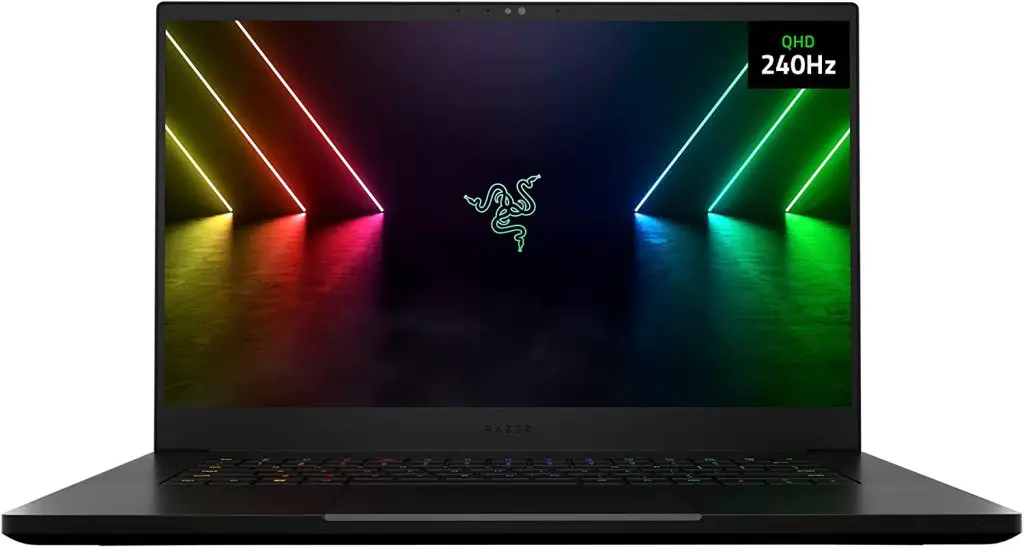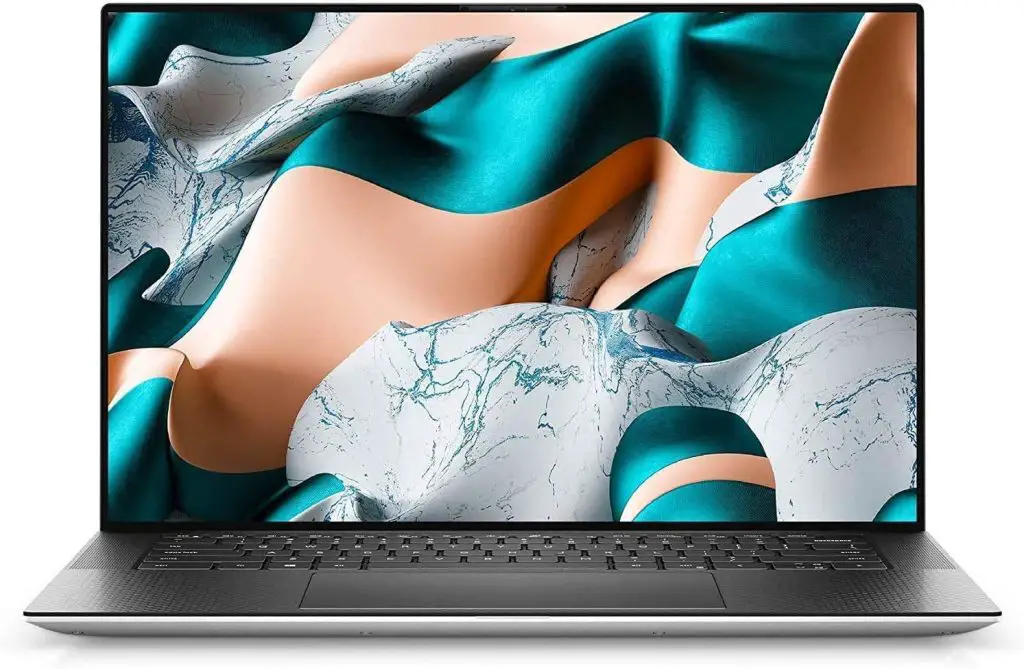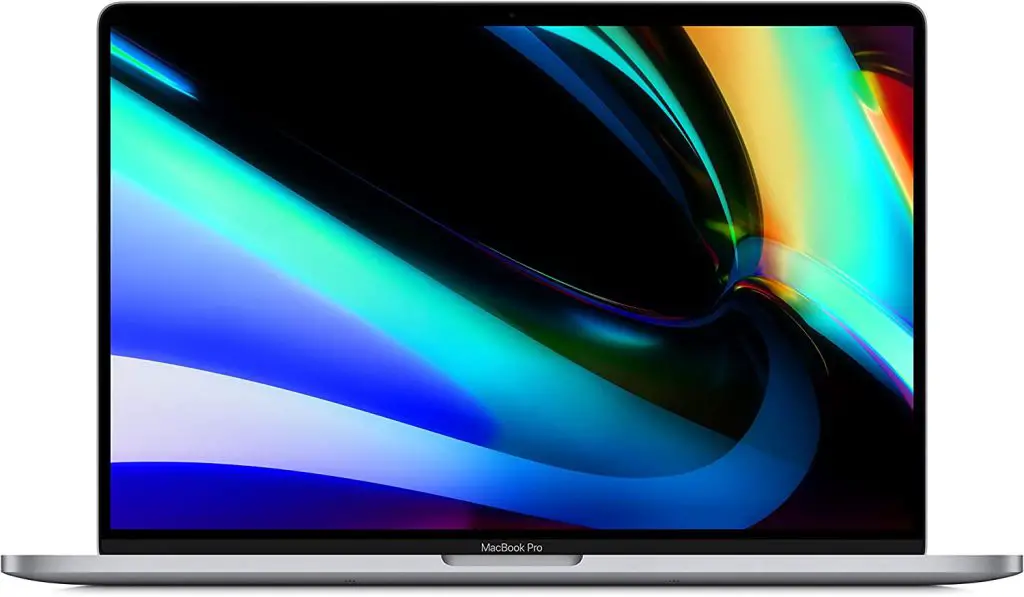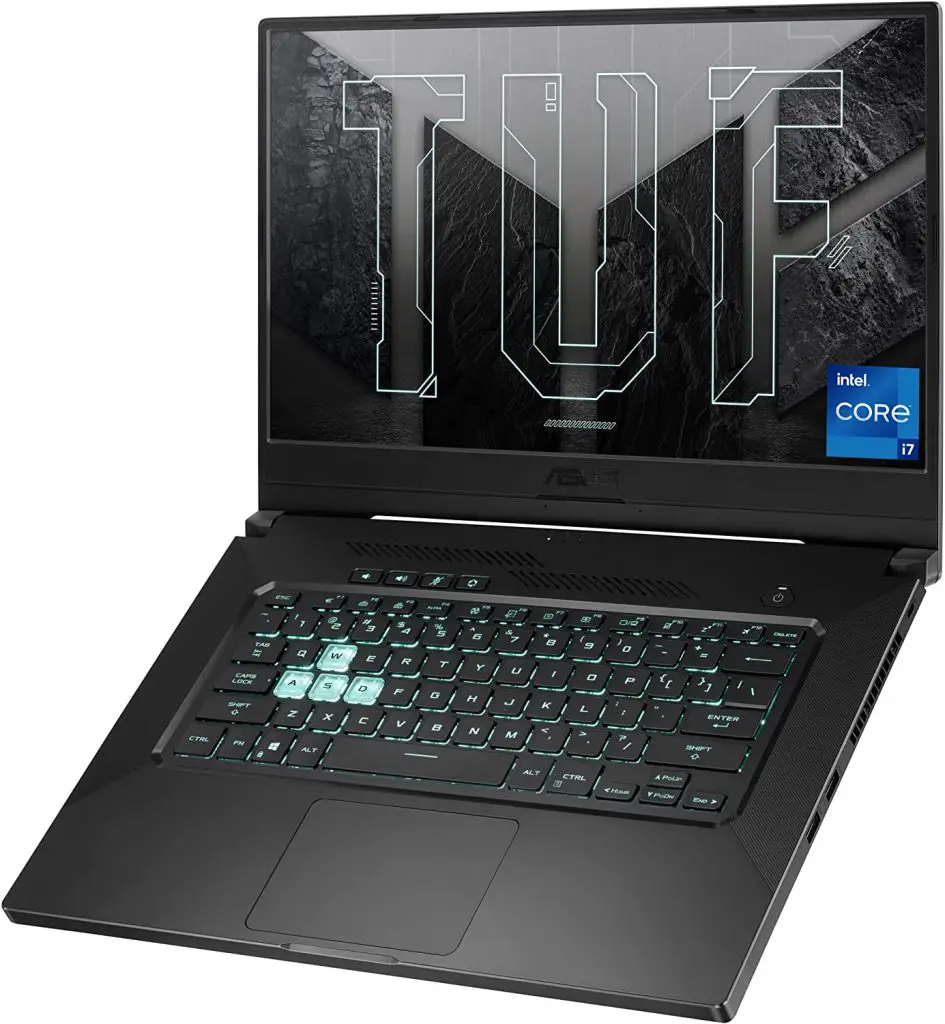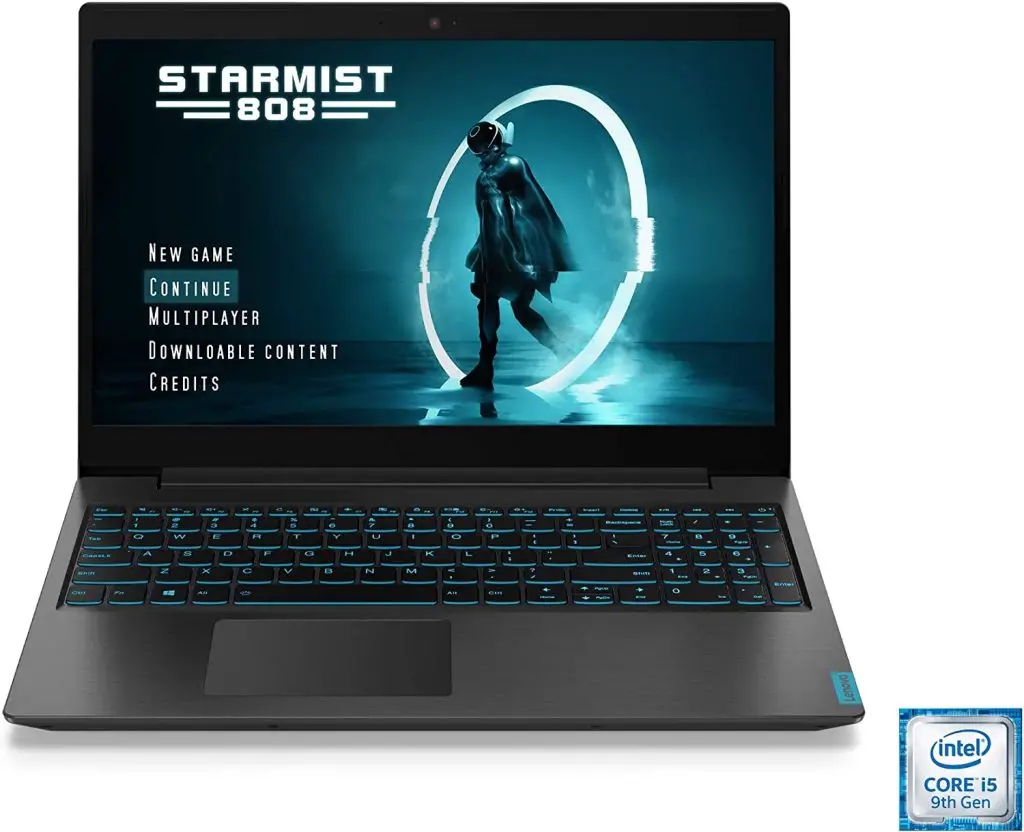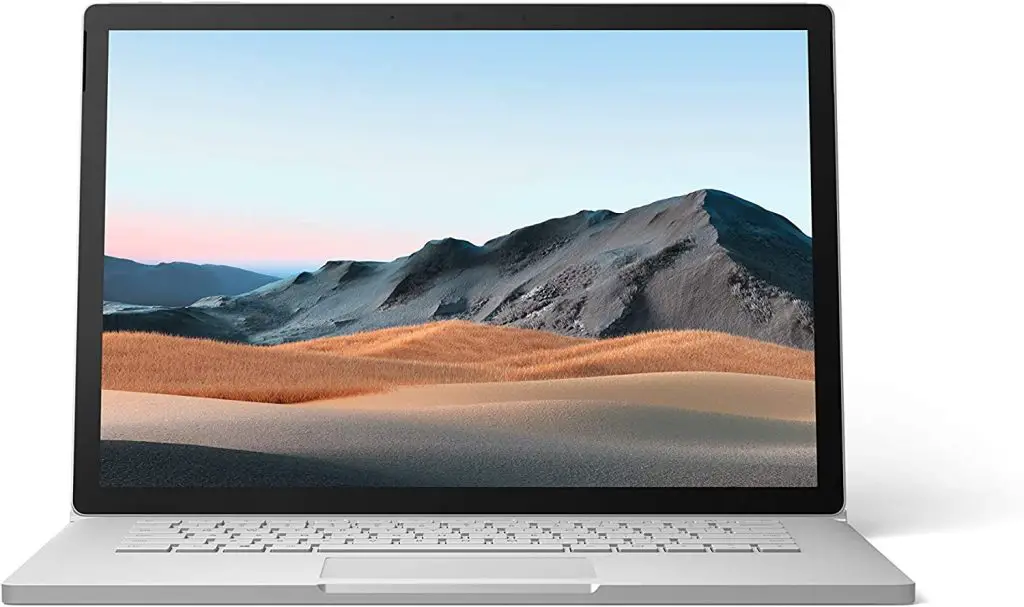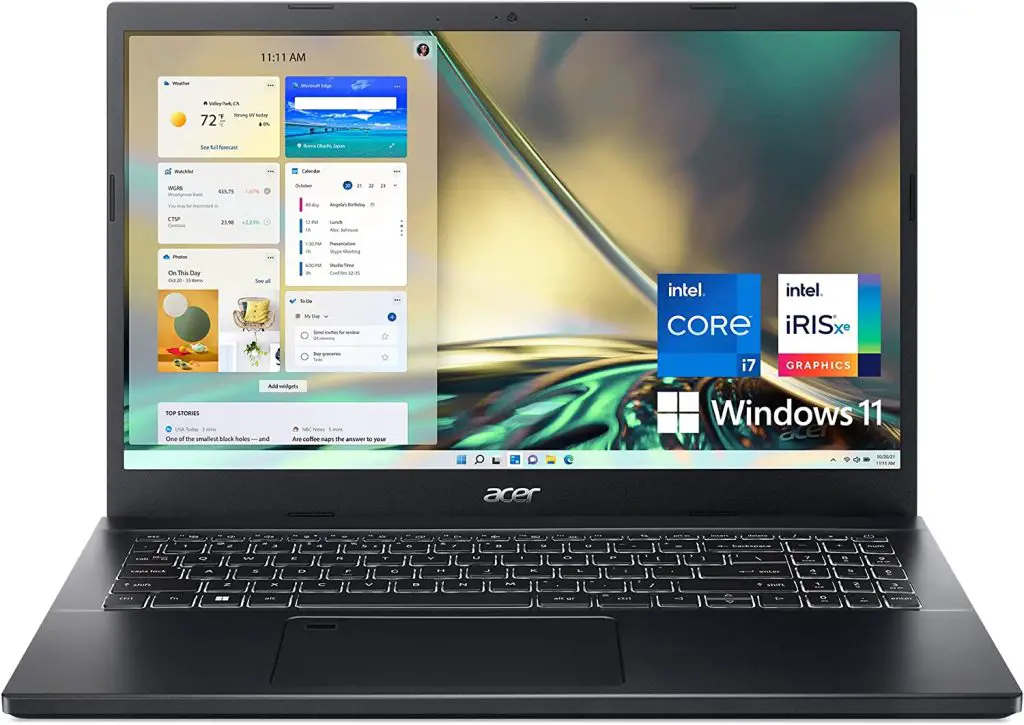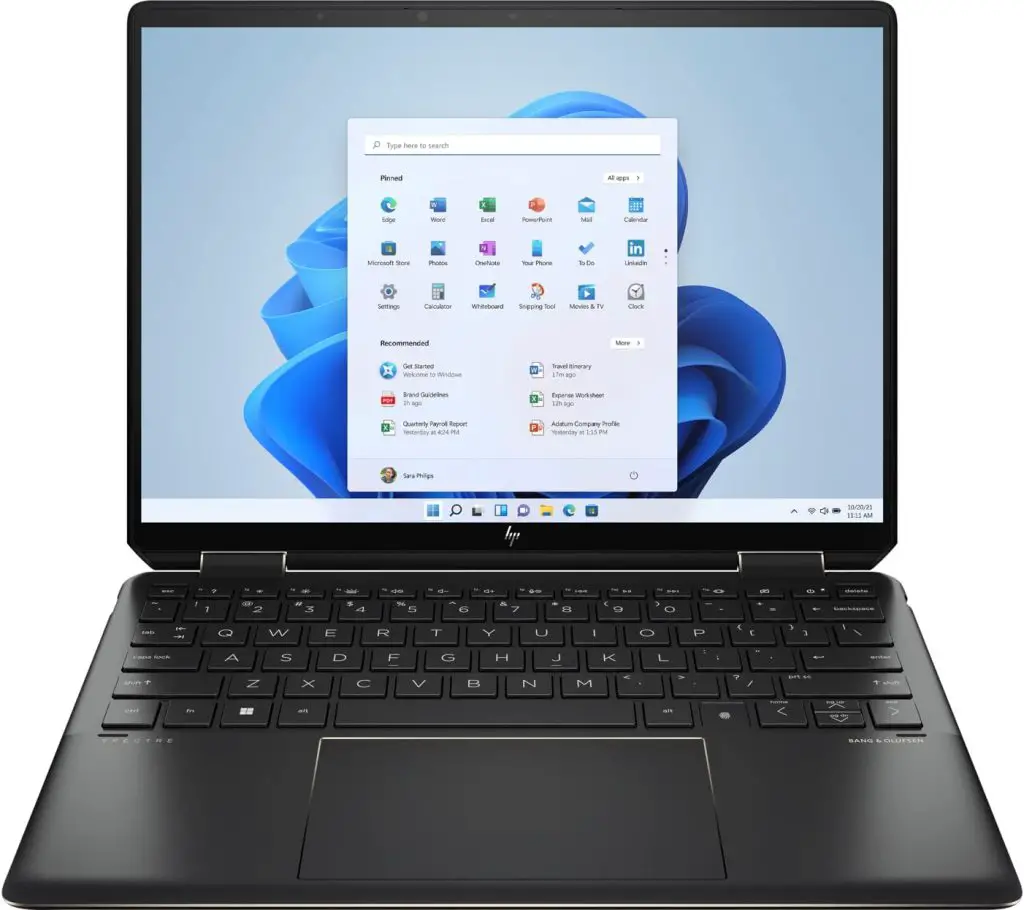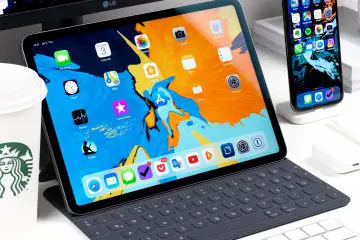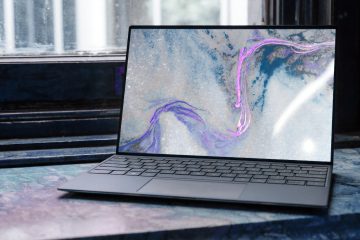With the progress of digitization and constant new innovations in the field of technology, high demands are now placed on graphic designers. In the meantime, pronounced creativity and a good understanding of design are no longer sufficient, because the technical requirements are also increasing. Designers today depend on having access to the latest graphics programs and at the same time, the most modern devices because the competition never sleeps.
Since creating graphics involves complex programs and larger amounts of data, designers need a powerful device that is able to process this data. Accordingly, the built-in graphics card as well as the processor and RAM play an important role in choosing the right laptop.
In addition, there are now some models that greatly facilitate graphic work due to their combination with a touch display. This not only makes the creation of graphics more convenient but also saves additional devices such as external graphics tablets.
When looking for the best laptops for graphic design work, you should consider a number of things. First of all, you should make sure you have a laptop that offers enough power to handle graphics-intensive applications.
To ensure that the new laptop can do this, you’ll need a device with a powerful modern processor and preferably also a discrete graphics card.
The best laptops for graphic design will also have impressive screens that not only display your work in the best possible light but also accurately reproduce colors while ensuring you don’t get eye strain after working on them for a long time. The best laptops for graphic design should also be thin and light so you can take them with you when you travel.
Below, we have compiled a list of the best laptops for graphic designers that will make your work better and help improve your results.
Best laptops for graphic designers
Razer Blade 15
- CPU: 2.6GHz Intel Core i7-10750H
- Memory: 16GB
- Storage: 512GB SSD
- Display: 15.6-inch FHD IPS (1920 x 1080)
- GPU: 6GB NVIDIA GeForce RTX 2060
- Battery: Up to 6 hours
The Razer Blade 15 is one of Razer’s most desirable laptops thanks to the brilliant build quality and certainly a more than adequate spec sheet. Although this variant of the Razer Blade 15 is still considered primarily a gaming laptop, it can easily handle graphic design or some of the more complicated tasks like video editing and 3D rendering.
Inside the laptop is the competent Intel Core i7-10750H processor, which can achieve turbo clock rates of up to 5 GHz. As a laptop user, you must understand that a powerful CPU is the most important. When it comes to running apps like Illustrator, InDesign, or the entire Adobe Creative Suite, you need to care more about single-core processing power.
Although the H-series chipset excels in the stated category, it also comes with six cores and 12 threads for more demanding processing tasks. The presence of the NVIDIA GeForce GTX 2060 GPU ensures that images, designs, vector illustrations, and other aspects of graphic design are taken into account.
However, it is the storage speed of almost 12 Gbps that makes for faster renderings. The 6GB of VRAM only comes into play if you’re working on complicated 3D rendering or planning to connect multiple 4K monitors for a more cohesive professional workflow.
When it comes to processing multiple applications and resources simultaneously, the 16GB RAM support is a handy computing feature. If you’re a regular Adobe Photoshop user and want to work with motion designs, 3D renderings, graphic layouts, web designs, and more, the RAM available lets you merge different platforms simultaneously without lag.
Storage-based requirements are met by the 512 GB SSD. As a rule of thumb, you must try installing some of the more demanding application programs such as Photoshop, GIMP, Illustrator, and CorelDraw Suite on the SSD for faster access. When it comes to the operating system, Windows 10 comes pre-installed.
Razer takes good care of the productivity-boosting specs with the backlit Chroma keyboard, silky touchpad, class-leading speakers, and a functional webcam-mic connection. The craftsmanship on display is simply brilliant as it features an aluminum unibody chassis and precision-cut edges.
At 8.75 pounds, it’s quite a heavy device. Port management is pretty intuitive, though, with Razer making room for Mini DisplayPort, HDMI, and the elusive Thunderbolt 3 slot, which lets you couple external resources and transfer data at nearly 40Gbps.
Aside from that, all the latest wireless standards are retained, followed by a standard battery module that offers a 6-hour backup. Still, it’s a solid choice for the professional graphic designer in you, best characterized by the brilliant screen, trendy design touches, and processing power.
Dell XPS 15 9500
- CPU: 2.6GHz Gen Intel Core i7-10750H
- Memory: 16GB
- Storage: 512GB SSD
- Display: 15.6 inch FHD+ IPS (1920 x 1200)
- GPU: 4GB NVIDIA GeForce GTX 1650 Ti
- Battery: Up to 12 hours
If you have the budget to opt for exceptional aesthetics without sacrificing processing power, the Dell XPS 15 9500 is the notebook to consider.
For starters, it’s topped by a 10th Gen Intel Core i7-10750H processor that can turbo clock up to 5GHz. Hence, this laptop is capable of handling any type of graphic design workload with ease. This laptop can handle Photoshop CC and other creative work, photo editing across multiple filters, and other challenging tasks.
For very demanding graphic design needs, the CPU offloads certain tasks to the NVIDIA GeForce GTX 1650 Ti GPU, which is combined with 4 GB of VRAM. The existing graphics process is more than sufficient for professional design.
In terms of RAM support, Dell offers 16GB that can easily handle multiple workflows and multitasking needs. The 512GB SSD unit is faster than a traditional HDD and helps to minimize device boot times significantly. The Windows 10 Home Edition operating system supports all your favorite graphic design software.
However, it’s the masterful display that steals the show thanks to the FHD+ resolution of 1920 x 1080 pixels. The continuous fairing ensures that the designers have plenty of screen real estate at their disposal. In addition, it offers exceptional color clarity thanks to 100 percent aRGB color space, VESA certification, HDR technology, and 94 percent DCI-P3 color space for a better wide-angle viewing experience.
Dell continues to innovate with a class-leading backlit keyboard and responsive touchpad that’s 62 percent larger than its predecessors. The existing speaker set is incredibly powerful, further supported by the 3D acoustic experience. In addition, there is a decent webcam and a usable microphone. The thermal layout with dual fans and stealth heat pipes to increase power loss is commendable.
Structurally, this is one of the slimmest Ultrabooks on the market. At almost 4.5 pounds, the laptop also qualifies as portable. When it comes to ports, you get 3 USB Type-C units, 2 of which are Thunderbolt 3 compatible. Aside from that, it also offers other legacy slots, killer Wi-Fi 6, and a variety of wired and wireless connectivity schemes. The battery can last up to 12 hours on a single charge.
Overall, the Dell XPS 15 9500 is one of the best-equipped laptops for graphic design thanks to its powerful processor and top-notch portability. However, the only notable downside is the price – but it’s well worth it.
Apple MacBook Pro
- CPU: 2.6GHz Intel Core i7-9750H
- Memory: 16GB
- Storage: 512GB SSD
- Display: 16-inch Retina IPS (3072 x 1920)
- GPU: 4GB AMD Radeon Pro 5300M
- Battery: Up to 11 hours
The latest MacBook Pro is all about raw performance and full graphic design tasks, giving the pros an advantage. Macbooks are a very popular choice amongst graphic designers.
Under the hood, Apple packs the Intel Core i7-9750H processor with 12MB L3 cache and turbo clock speeds of up to 4.5GHz. The existing processor is more than capable of handling Graphic Design Studio, Sketchbook, and other applications like LibreCAD. If you want to explore walkthroughs, 3D models, and renders, the dedicated AMD Radeon Pro 5300M GPU and Intel UHD 630 iGPU work together to make room for the best possible graphics.
For VRAM, Apple offers 4GB of GDDR6 memory with faster bandwidth. This feature comes in handy when you want to set up workflows with external 4K devices. Apple launches an upgradeable 16GB of RAM, followed by an ultra-fast 512GB solid-state storage drive. Both features allow you to work seamlessly with larger files and projects without hitting a dead end. You also get the latest macOS preinstalled on the MacBook.
Graphic designers are best served by the 16-inch screen with a total resolution of 3072 x 1920 pixels. Retina display technology contributes to the visual clarity of this laptop, while the extensive P3 color gamut ensures exceptional color reproduction levels. Simply put, the GPU and display work together to showcase the processor’s processing power by visualizing exceptional designs with perfect color contrast and saturation.
The magical keyboard boosts productivity, followed by the responsive trackpad with built-in TouchID. The touch-supported Touch Bar facilitates professional activities, while the six-speaker system creates space for exceptional acoustics. Apart from that, Apple also brings a top-of-the-line webcam and an improved microphone array.
The MacBook Pro is also known for its brilliant thermal architecture, featuring a massive heatsink and improved heat-dissipating fans. Despite fan-based thermal management, it’s one of the quietest laptops and feels very similar to fanless machines.
The Macbook Pro features a slim body that weighs a respectable 4.3 pounds. When it comes to ports, you get 4 Thunderbolt 3 units, followed by other legacy slots for coupling peripherals and external displays. In addition, the company has high-end WiFi and Bluetooth standards, followed by a powerful battery with an 11-hour backup.
Overall, the MacBook Pro 16″ is one of the most complete laptops if you are looking for a professional graphic designer.
ASUS TUF Dash 15
- CPU: 3GHz Intel Core i7-11370H
- Memory: 8GB
- Storage: 512GB SSD
- Display: 15.6-inch FHD (1920 x 1080)
- Graphics: 4GB NVIDIA GeForce RTX 3050 Ti
- Battery: Up to 16 hours
You have to be very careful when choosing mid-range notebooks for the design because you want to spend the money wisely and based on various professional preferences – especially when you need it for a specific purpose like graphic design. Therefore, if your requirements are strictly limited to various forms of product graphics, logo design, UI structuring, and more, the ASUS TUF Dash 15 is the perfect option.
When it comes to performance, you get a resourceful Intel Core i7-11370H processor. The existing chipset turbo clocks at 4.8 GHz and is actively supported by the GeForce GTX 1650 GPU based on the Turing architecture. The powerful processor is the first line of defense against demanding graphic design apps like Photoshop but offloads certain tasks to the GPU, which is further aided by the 4GB VRAM.
Multitasking feels like a charm on this laptop thanks to the 16GB of RAM. As for storage, you get access to a 1TB SSD unit with PCIe support that can easily load the Windows 10 Home Edition operating system platform and the demanding application programs.
The 15.6-inch display is all about clarity and precision. In addition, thin bezels ensure that there is a lot of screen size available. Asus boasts a cumulative display resolution of 1920 x 1080 pixels, which further improves the quality of the IPS display.
Productivity is never an issue with the ASUS TUF Dash 15 thanks to the WASD-compatible and responsive keyboard. The N-Key Rollover technology and durability of almost 20 million keystrokes are well-suited for content creators and casual gamers. Apart from that there is an integrated and smooth touchpad, followed by powerful speakers, a working webcam, and working microphones.
When it comes to thermals, the ADC cooling technology, and large fans are class-leading additions. Apart from that, the laptop weighs almost 4.41 pounds and features USB 3.0, 3.1, Type-C, and other functional ports, followed by the Wi-Fi 5 connectivity standards. The battery is a so-so addition, however, barely lasting 5 hours on a single charge.
In summary, the TUF Dash 15 from ASUS is a performance-oriented machine that won’t burn a hole in your pocket.
Lenovo IdeaPad L340
- CPU: 2.4GHz Intel Core i5-9300H
- Memory: 8GB
- Storage: 512GB SSD
- Display: 15.6-inch FHD IPS (1920 x 1080)
- GPU: 4GB NVIDIA GeForce GTX 1650
- Battery: Up to 6.5 hours
Although many laptops are suitable for designing, Lenovo’s IdeaPad L340 comes across as a decent choice due to the processing hardware being competent and optimized with good GPU selection.
Under the hood, Lenovo packs the class-leading Intel Core i5-9300H chipset with Turbo Boost clock speeds of up to 4.1GHz. Thanks to the above-average single-core performance, every graphic design application is competently supported by this chipset. The hexa-core SoC is supplemented by the GeForce GTX 1650 GPU, which works in combination with 4 GB of VRAM.
As for system memory, Lenovo only offers 8GB of RAM but supports upgradability. Therefore, it is best to use this laptop as your primary workstation and multitask with restraint. In terms of storage, you get the 512GB NVMe solid-state drive that comes with upgrade support. Windows 10 is the existing operating platform preinstalled by Lenovo.
As far as productivity goes, Lenovo brings a backlit keyboard, responsive touchpad, powerful speakers with Dolby audio enhancement, and a serviceable webcam-microphone combo. Most importantly, the thermal layout is quite innovative and subject to personalization based on the different productivity modes including Quick mode for better gaming and Quiet mode for professional activities like graphic design, audio production, and more.
The IdeaPad L340 is slightly heavier at nearly 4.84 pounds but doesn’t compromise on the existing array of ports. Lenovo offers HDMI 2.0, USB Type-A, USB 3.2 Gen 1, Wi-Fi 5, and more. The included battery lasts up to 6.5 hours before it needs to be charged.
Lenovo’s IdeaPad L340 is all about power, weight, and desktop-like performance. This is one of the better choices out there if you want to compromise on the portability quotient.
Microsoft Surface Book 3
- CPU: 1.3GHz Intel Core i7-1065G7
- Memory: 16GB
- Storage: 256GB SSD
- Display: 15-inch IPS touch (3000 x 2000)
- GPU: 4GB NVIDIA GeForce GTX 1650
- Battery: Up to 15.5 hours
A graphic designer with a strong focus on performance despite constant movement can easily consider the Surface Book 3 for their professional tasks. If you fall into this category, this detachable laptop is expected to fulfill any of your productivity-based needs in a snap.
Under the hood, Microsoft has the Intel Core i7-1065G7 processor. Despite being a graphics-optimized, low-power chipset, its single-core performance allows it to battle SoCs like the H-series for their bucks. This quad-core processor has a turbo clock speed of up to 3.9 GHz, which is more than sufficient for designing raster and vector graphics.
The existing NVIDIA GeForce GTX 1650 combined with 4GB of RAM is a decent addition and fits perfectly if you want to work on video editing or larger projects by pairing external displays with the highest possible resolutions. The Max-Q GPU is extremely energy efficient and keeps heat generation to a minimum despite demanding mid-range graphics-intensive tasks and games.
As for the display, the 15-inch touchscreen panel might be a bit limiting for a more expressive graphic designer. However, the tablet-like form factor, followed by stylus support, more than makes up for this small downside. In terms of resolution, you get 3000 x 2000 pixels that add to the visual quality of the laptop.
Next is the slim but efficient backlit keyboard, followed by the slick touchpad, front-facing speakers, and dual-camera setup. You also get a decent set of studio microphones with this laptop to further reinforce the professional quotient. Despite being a slim laptop, the Surface Book 3 is sturdy enough thanks to the metal body.
At 3.62 pounds, this is one of the lightest detachable notebooks on the market and offers a range of functional ports and connectivity specifications, including USB 3.1 Type-A, Type-C, Power Delivery Revision technology v3.0, Wi-Fi 6, and Bluetooth 5.0. When it comes to battery backup, the keyboard-attached unit can last up to 15.5 hours on a single charge.
In summary, if you’re looking for the best possible balance of performance and portability, there’s no better laptop for graphic design than the Surface Book 3.
Acer Aspire 7
- CPU: 2.4GHz Intel Core i5-9300H
- Memory: 8GB
- Storage: 512GB SSD
- Display: 15.6 inch FHD IPS (1920 x 1080)
- GPU: 4GB NVIDIA GeForce GTX 1650
- Battery: Up to 8.5 hours
If you’re only interested in graphic design and want a budget laptop that can run just about any application in that domain, the Acer Aspire 7 is a pretty resourceful option.
In terms of power and performance, the Intel Core i5-9300H chipset exceeds expectations. The hexa-core processor combined with HyperThreading technology is a great advantage, given that you want to work on more complex vector and raster graphics, followed by 3D and motion design. However, the single-core performances associated with this laptop are top-notch and can easily handle any graphics-intensive demand.
The existing processor works together with the GeForce GTX 1650 GPU, which features the Pascal architecture and 4 GB of dedicated VRAM with a decent memory bandwidth for faster processing when external displays and workflows are involved.
You also get decent multitasking support with the 8GB RAM and large projects and designs can easily be stored on the 512GB SSD unit. The NVMe storage unit is ultra-fast, helping to load the Windows 10 operating system and demanding application programs in no time.
The 15.6-inch display offers exceptional color reproduction thanks to the overall resolution of 1920 x 1080 pixels. In addition, Acer offers a widescreen and all-screen viewing experience thanks to the thinnest possible 0.24-inch bezels. The Aspire 7’s designs look brilliant and lifelike thanks to the 72 percent NTSC color space.
Other productivity-focused specs include a backlit keyboard with a dedicated numpad and decent key travel, an innovative Precision touchpad with an integrated fingerprint scanner, dual speakers with Acer’s proprietary Acoustic Boost, a 720p webcam, and voice-cleaned microphones.
This laptop weighs almost 7.28 pounds and comes with a standard USB 3.1 Type-C, Type-A, HDMI ports, and dual-band wireless support followed by Gig Ethernet connectivity. When it comes to battery backup, Acer doesn’t compromise and provides a backup of 8.5 hours with moderate to heavy use.
Overall, Acer’s Aspire 7 might not be a top-of-the-line laptop for graphic design, but it gets the job done if you’re all about design and nothing GPU-intensive.
HP Spectre x360
The HP Specter x360 offers a very good overall package and combines all the properties mentioned above. It has a 15.6-inch screen, an i7 processor, 16 GB of RAM, a 2 TB SSD, and an Intel Iris Xe graphics card. The price is very reasonable for the performance. Here, too, the screen can be folded completely backward. All in all, this is a practical and powerful laptop for graphic designers.
Best laptop for graphic designers – buyer’s guide
When evaluating laptops for graphic designers, there are several key criteria to consider to ensure that they find the best laptop that meets their specific needs and requirements. These criteria include performance, display, storage, portability, and graphics card.
Performance
Performance is one of the most important criteria to consider when evaluating laptops for graphic designers. A laptop with a fast processor, enough memory and storage, and a good graphics card can help graphic designers to create and edit their designs more efficiently.
Display
Display is also an important criterion to consider when evaluating laptops for graphic designers. A laptop with a high-resolution display and accurate color reproduction can help graphic designers to view and edit their designs with greater detail and accuracy.
Storage
Storage is also a key criterion to consider when evaluating laptops for graphic designers. A laptop with ample storage space can help graphic designers to store their large design files and projects.
Portability
Portability is also an important criterion to consider when evaluating laptops for graphic designers. A laptop that is lightweight and easy to carry can help graphic designers to take their designs on the go and work from anywhere.
Graphics Card
Graphics card is also a critical criterion to consider when evaluating laptops for graphic designers. A laptop with a good graphics card can help graphic designers to create and edit their designs more efficiently and with greater detail and accuracy.
Frequently asked questions
Is a graphics card required?
Yes. It is essential to have an Nvidia or AMD graphics card to support your graphic design programs and handle the demanding tasks you may have at hand.
Does a large display affect battery life?
Yes. The larger display usually has an improved brightness level, and leaving the laptop on for hours will drain the battery much faster than a smaller laptop. However, it is a necessity for graphic designers.
Should I go for a 1080p or 4K display?
The 4K display laptops are more expensive and have demanding hardware requirements to run effectively. If your budget allows, choosing a 4K laptop is the best decision as they go a long way in making using graphic design software more fun while being productive.
How to choose the laptop with the right graphics card?
If you’re a graphic designer, you should be fine with most Nvidia and AMD cards. However, video editors require Quadro and other specific cards designed to speed up the video rendering process.
Do additional cores guarantee exceptional graphic design performance?
Graphic design is a single-core process and is therefore best initiated by CPUs that offer higher clock speeds for the single-core and even support overclocking. As such, an 8-core processor may not be the most cost-effective choice for a graphic designer and would offer no additional advantage over a hexa-core i7 processor.
Do you need lots of RAM for graphic design?
When it comes to graphic design, it’s the CPU that does most of the heavy lifting. However, when you work with applications like Photoshop and Illustrator at the same time, the complexity of multitasking can tax system memory. So extra RAM is always advisable for a more professional setup just to make sure the system doesn’t lag or freeze.
Why should you invest in a good display?
A good display will help you understand the color contrast and saturation of the design. Naturally, this is crucial for graphic designers. While a Full HD panel is a bare minimum to at least check the brightness of the vector and raster designs, better results require at least 72 percent NTSC color space or 100 percent sRGB color space.
What should a laptop be able to do for image processing?
For photographers and graphic designers, the screen is one of the most important parts of a new computer, not just a laptop. The focus here is on uniform light distribution, precise color rendering, and sufficient brightness. I recommend a laptop screen with IPS technology for this. In terms of resolution, Full HD (1920x1080px) is perfectly adequate, even with larger laptop screens.
Depending on how often you transport the laptop, you can choose between 13, 15, and 17-inch sizes. I recommend a 15-inch laptop and an external screen for at home, more on that below.
Good performance for smooth image processing
This point is actually self-explanatory. If you edit pictures, then your new laptop has to be able to do a lot. The more megapixels you get from your camera, the better hardware you need. Not only processor and RAM are decisive here, but the graphics card is now also used by Photoshop and Lightroom.
When it comes to graphics cards, an onboard graphics card is ok, but a “real” graphics card is better. Here it is not necessary to take a high-end graphics card, an entry-level graphics card such as the Nvidia GTX 1650 is completely sufficient. The difference between Lightroom and Photoshop compared to a high-end graphics card like the Nvidia RTX 3080 is less than 20%.
Conclusion
In conclusion, the best laptops for graphic designers are those that meet their specific needs and requirements. A laptop with a fast processor, high-resolution display, ample storage space, good graphics card, and portability can help graphic designers to create and edit their designs more efficiently and with greater detail and accuracy. By considering factors such as budget, software compatibility, and additional features, graphic designers can find the best laptop for their needs and preferences.

![Top 8 Best Laptops for Graphic Designers [List & Guide]](https://www.ephatech.com/wp-content/uploads/2022/11/Top-12-Best-Headphones-for-Conference-Calls-List-Guide-3.jpg)
